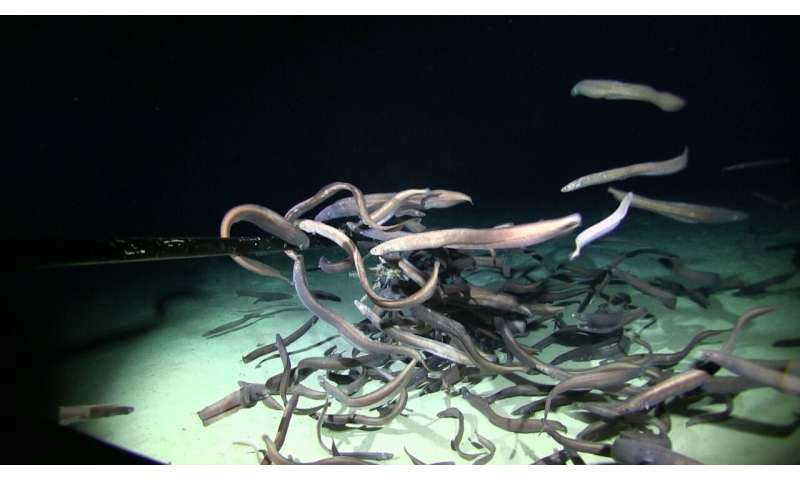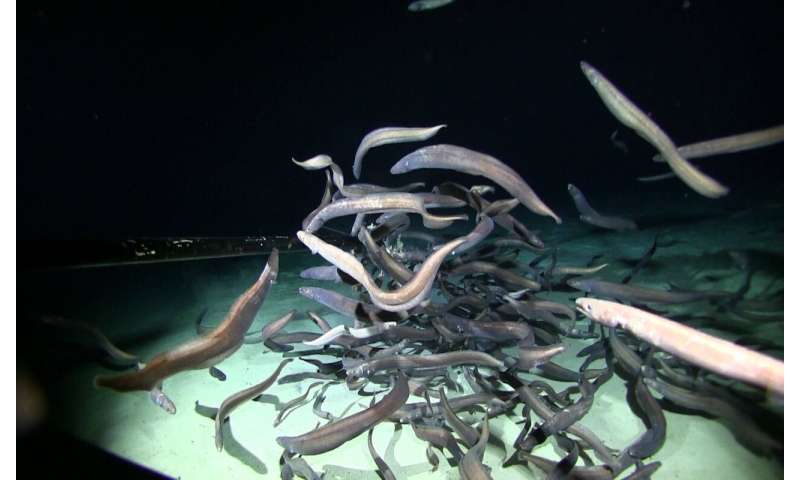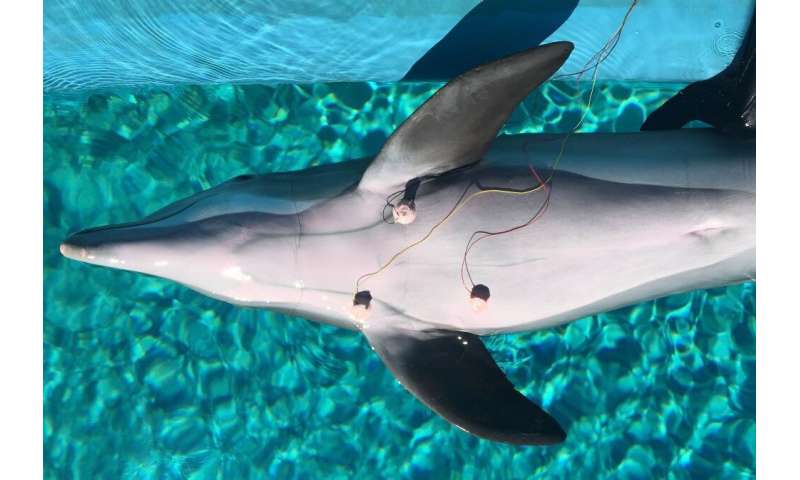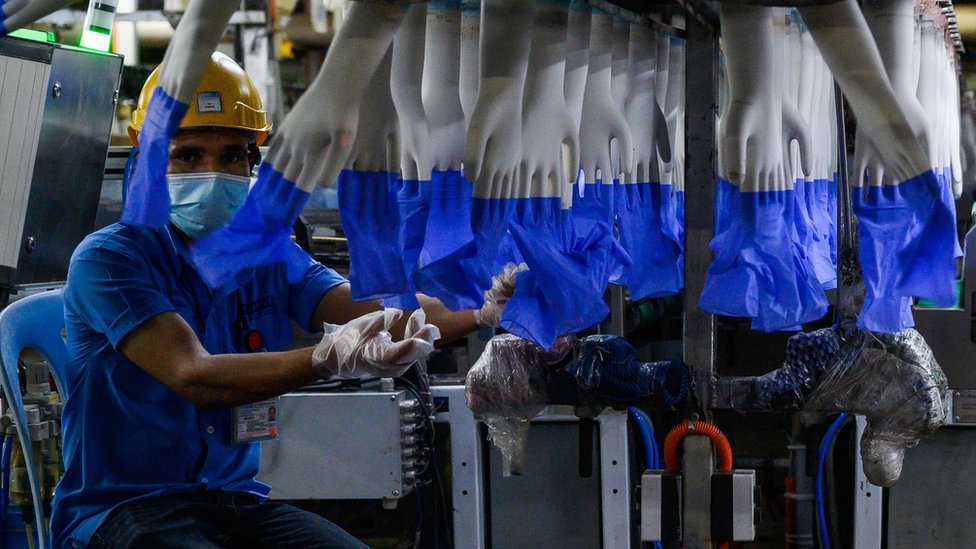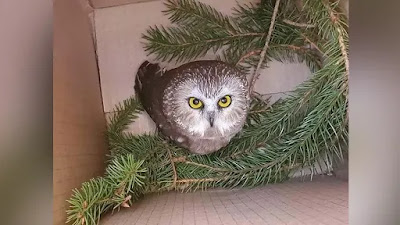by Adriana Brasileiro

Credit: CC0 Public Domain
In Florida, a critically endangered Kemp's ridley sea turtle was entangled in a plastic bag that had become filled with sand. The plastic bag had wrapped around the turtle's neck, which likely led it to drown or suffocate
In another Florida case, a recently hatched sea turtle was found with two plastic balloons in its gastrointestinal tract, causing a blockage that potentially led to the animal's death.
Balloons, plastic bags, recreational fishing line and food wrappers are killing thousands of marine animals as they eat plastic items that later perforate internal organs, or become entangled and drown, Oceana said in a new report.
The conservation group surveyed dozens of government agencies, organizations and institutions to paint a grim picture of the impact of plastic on marine mammals and sea turtles in the United States. Oceana compiled data on plastic ingestion and entanglements, and called the growing plastic problem "an unfolding disaster" for marine animals in U.S. waters.
"Single-use plastics are simply everywhere, so this was an attempt to quantify the damage to marine life in the U.S., even if this is only a snapshot," said Kimberly Warner, the author of the report and a senior scientist at Oceana.
The organization found that plastics ranged in size and type, from microplastics that were perforating the gastrointestinal tract of a baby sea turtle to DVD cases and huge plastic sheets that had been swallowed by whales.
The organization found records of almost 1,800 animals from 40 different species swallowing plastic or becoming entangled between 2009 and 2019. The data was provided by 51 marine life organizations and government agencies such as NOAA Fisheries Marine Mammal Stranding Network, the Florida Fish and Wildlife Conservation Commission, the Sanibel-Captiva Conservation Foundation and the National Sea Turtle Stranding and Salvage Network Coordinator in the Southeast Fisheries Science Center.
The report didn't include marine debris such as commercial fishing gear, which means the problem is considerably worse than Oceana's report indicates, Warner said.
Scientists estimate that 15 million tons of plastic wash into the ocean every year, or about two garbage trucks' worth of plastic every minute, Oceana said. With plastic production expected to quadruple by the year 2050, some expect there will be more plastic than fish in the world's oceans.
Of the 1,792 animals that swallowed or became entangled in plastic, 861 were sea turtles, including all six U.S. species, and 931 were marine mammals from 34 different species, Oceana said.
The biggest problem was animals consuming plastic. Marine animals often mistake plastic for food or inadvertently swallow plastic while feeding or swimming.
"The result is that it can obstruct their digestion or lacerate their intestines, and all of this can interfere with their ability to feed and obtain the nourishment they need. These problems can lead to an animal's starvation and death," the report said.
Oceana found records of 700 Florida manatees that suffered from plastic entanglement or ingestion between 2009 and 2018. Nearly all of them had swallowed plastic, mostly plastic fishing line.
Explore further
In Florida, a critically endangered Kemp's ridley sea turtle was entangled in a plastic bag that had become filled with sand. The plastic bag had wrapped around the turtle's neck, which likely led it to drown or suffocate
In another Florida case, a recently hatched sea turtle was found with two plastic balloons in its gastrointestinal tract, causing a blockage that potentially led to the animal's death.
Balloons, plastic bags, recreational fishing line and food wrappers are killing thousands of marine animals as they eat plastic items that later perforate internal organs, or become entangled and drown, Oceana said in a new report.
The conservation group surveyed dozens of government agencies, organizations and institutions to paint a grim picture of the impact of plastic on marine mammals and sea turtles in the United States. Oceana compiled data on plastic ingestion and entanglements, and called the growing plastic problem "an unfolding disaster" for marine animals in U.S. waters.
"Single-use plastics are simply everywhere, so this was an attempt to quantify the damage to marine life in the U.S., even if this is only a snapshot," said Kimberly Warner, the author of the report and a senior scientist at Oceana.
The organization found that plastics ranged in size and type, from microplastics that were perforating the gastrointestinal tract of a baby sea turtle to DVD cases and huge plastic sheets that had been swallowed by whales.
The organization found records of almost 1,800 animals from 40 different species swallowing plastic or becoming entangled between 2009 and 2019. The data was provided by 51 marine life organizations and government agencies such as NOAA Fisheries Marine Mammal Stranding Network, the Florida Fish and Wildlife Conservation Commission, the Sanibel-Captiva Conservation Foundation and the National Sea Turtle Stranding and Salvage Network Coordinator in the Southeast Fisheries Science Center.
The report didn't include marine debris such as commercial fishing gear, which means the problem is considerably worse than Oceana's report indicates, Warner said.
Scientists estimate that 15 million tons of plastic wash into the ocean every year, or about two garbage trucks' worth of plastic every minute, Oceana said. With plastic production expected to quadruple by the year 2050, some expect there will be more plastic than fish in the world's oceans.
Of the 1,792 animals that swallowed or became entangled in plastic, 861 were sea turtles, including all six U.S. species, and 931 were marine mammals from 34 different species, Oceana said.
The biggest problem was animals consuming plastic. Marine animals often mistake plastic for food or inadvertently swallow plastic while feeding or swimming.
"The result is that it can obstruct their digestion or lacerate their intestines, and all of this can interfere with their ability to feed and obtain the nourishment they need. These problems can lead to an animal's starvation and death," the report said.
Oceana found records of 700 Florida manatees that suffered from plastic entanglement or ingestion between 2009 and 2018. Nearly all of them had swallowed plastic, mostly plastic fishing line.
Explore further
Amount of plastic dumped in Mediterranean Sea to double in 20 years: report
©2020 Miami Herald
Distributed by Tribune Content Agency, LLC
©2020 Miami Herald
Distributed by Tribune Content Agency, LLC
